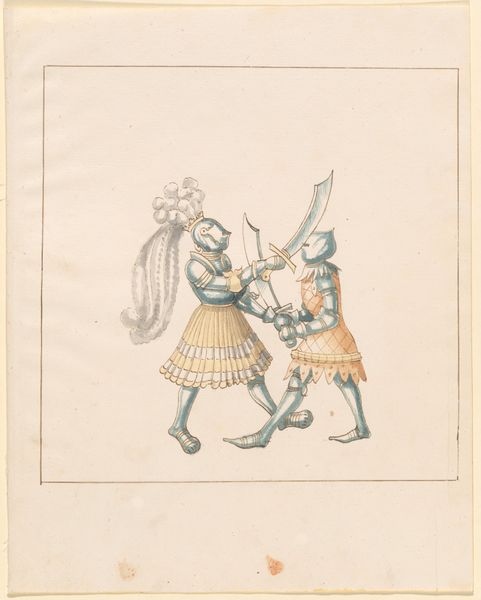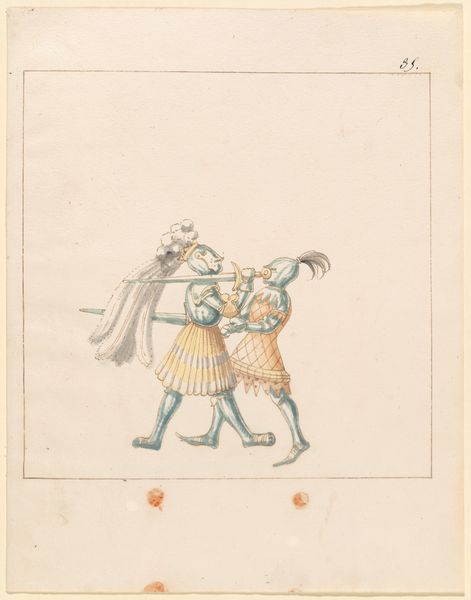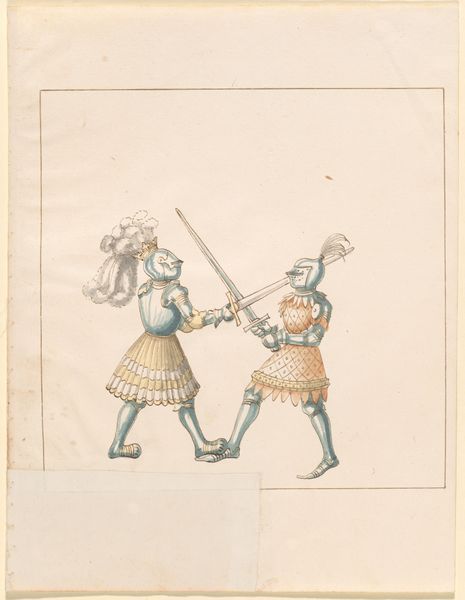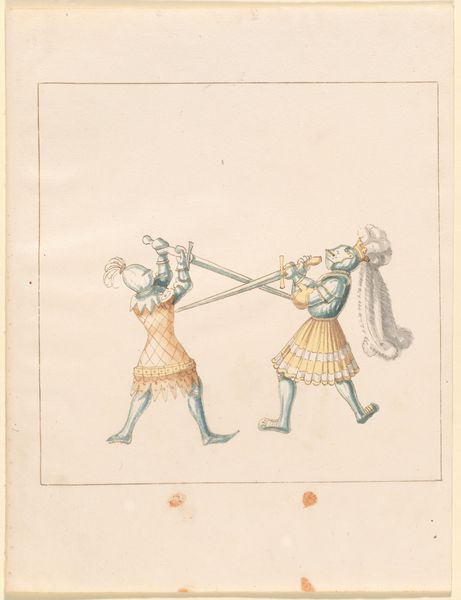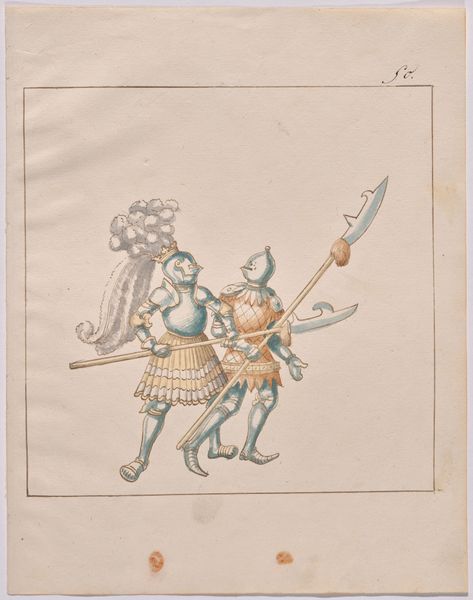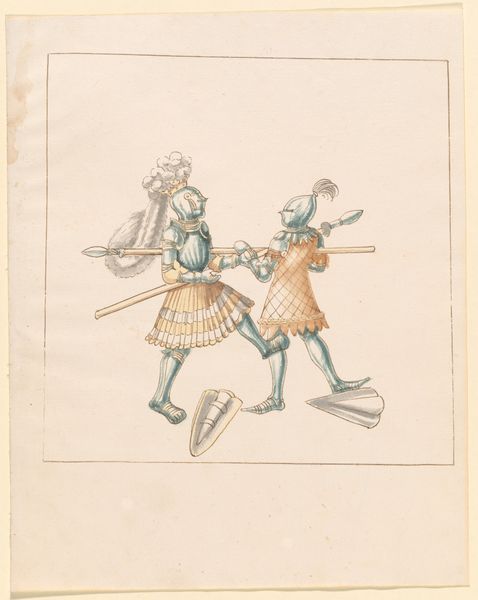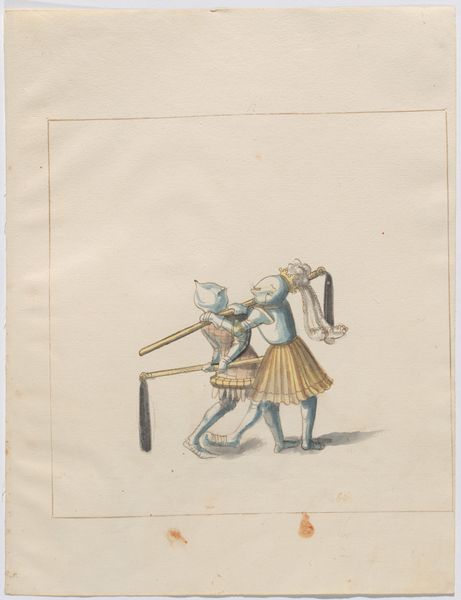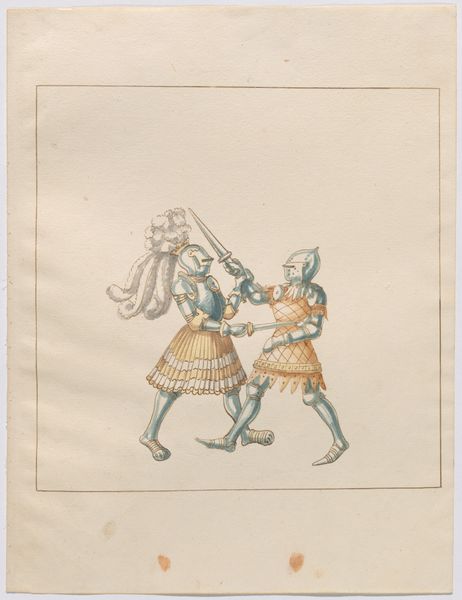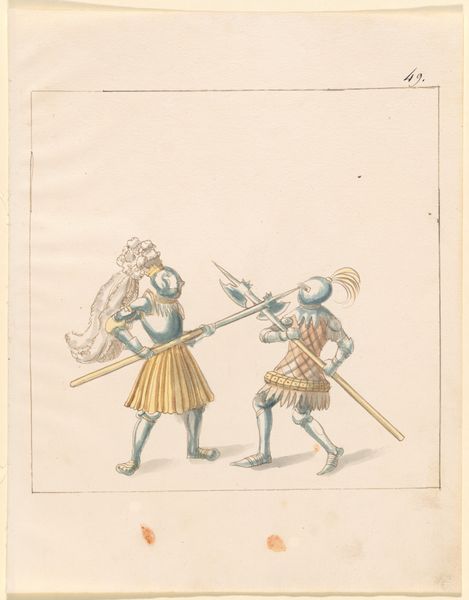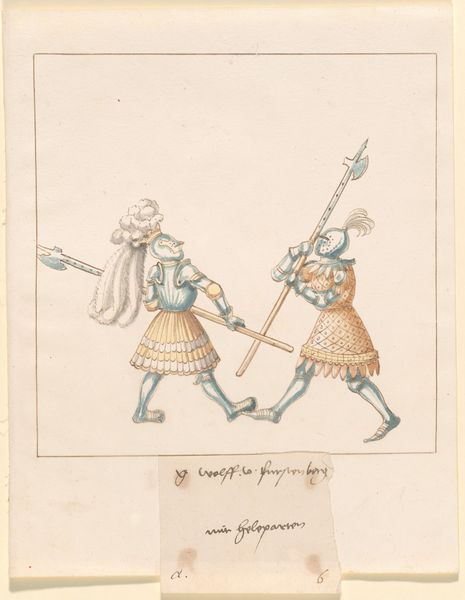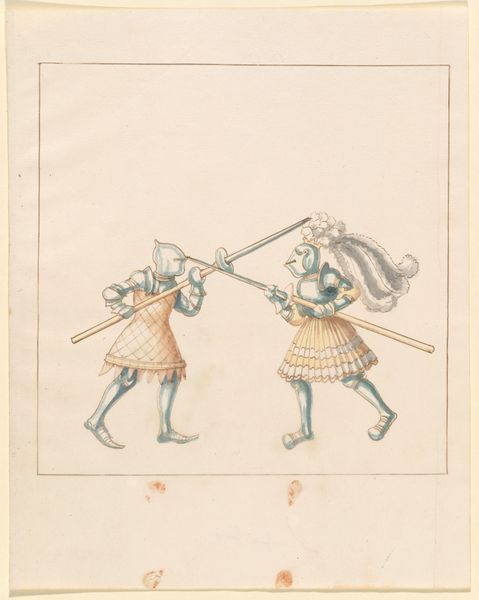
drawing, watercolor
#
drawing
#
narrative-art
#
figuration
#
watercolor
#
watercolour illustration
#
italian-renaissance
Dimensions: sheet: 33.8 × 26.4 cm (13 5/16 × 10 3/8 in.)
Copyright: National Gallery of Art: CC0 1.0
Editor: Here we have a watercolour drawing called "Foot Combat with Longswords", made around 1512-1515 by an unknown artist during the Italian Renaissance. It shows two men in armor fighting. I am struck by how elegantly their dance of aggression is portrayed, even if the scene itself implies violence. What's your read on this artwork? Curator: It's a fascinating piece because it showcases a very specific intersection of power, gender, and spectacle in the Renaissance. These aren't just men fighting; they are performing a ritualized display of martial skill associated with masculinity, honor, and nobility. It is important to analyze who is represented and what message this form of entertainment sent. Does this visualization endorse the practice or examine potential problems related to class and hierarchy? Editor: I never thought about the ‘performance’ aspect so deeply! Are you suggesting the image might be a commentary on social class, even? Curator: Absolutely. Consider who is typically afforded the opportunity to engage in such displays. It’s about power dynamics. This image aestheticizes combat, potentially normalizing or even glorifying a culture steeped in violence controlled and perpetuated by certain powerful actors. Editor: That’s a strong point. It raises questions about whose stories are told and whose are left out. How can we unpack that further? Curator: By examining the context in which such images were created and circulated. Think about the patronage system. Who commissioned this artwork, and what message did they want to convey? These questions can unravel layers of meaning embedded in the visual representation. Editor: I’m starting to see it. The grace and pageantry may distract from the underlying structures of power that make such a display possible. I'll certainly think about these kinds of displays very differently moving forward. Curator: Precisely! This helps contextualize art by going beyond appreciation of artistry to analyzing its role within larger social systems.
Comments
No comments
Be the first to comment and join the conversation on the ultimate creative platform.
